Increasing Adoption of Renewable Energy
The transition towards renewable energy sources is driving the High Nickel Cathode Material Market. As countries strive to reduce carbon emissions, the demand for energy storage solutions, particularly in the form of lithium-ion batteries, is surging. High nickel cathodes, known for their high energy density, are becoming increasingly essential in energy storage systems that support renewable energy integration. The market for energy storage systems is projected to grow significantly, with estimates suggesting a compound annual growth rate of over 20% in the coming years. This growth is likely to bolster the High Nickel Cathode Material Market, as manufacturers seek to enhance battery performance and efficiency.
Expansion of Electric Vehicle Infrastructure
The expansion of electric vehicle (EV) infrastructure is a crucial driver for the High Nickel Cathode Material Market. As governments and private sectors invest in charging stations and related technologies, the adoption of electric vehicles is expected to rise. This trend is supported by various incentives aimed at promoting EV usage, which in turn increases the demand for high-performance batteries. High nickel cathodes are favored for their ability to provide longer driving ranges and faster charging times. The EV market is anticipated to witness a growth rate of approximately 15% annually, further propelling the High Nickel Cathode Material Market as manufacturers adapt to meet the evolving needs of consumers.
Technological Innovations in Battery Chemistry
Technological innovations in battery chemistry are significantly influencing the High Nickel Cathode Material Market. Research and development efforts are focused on enhancing the performance and safety of lithium-ion batteries, with high nickel cathodes playing a pivotal role. These advancements include the development of new materials and manufacturing processes that improve energy density and cycle life. The market for advanced battery technologies is expected to reach several billion dollars by the end of the decade, indicating a robust growth trajectory. As manufacturers strive to produce batteries that meet stringent performance standards, the demand for high nickel cathodes is likely to increase, thereby benefiting the High Nickel Cathode Material Market.
Government Policies Supporting Electric Mobility
Government policies aimed at supporting electric mobility are a significant driver for the High Nickel Cathode Material Market. Many countries are implementing regulations and incentives to promote the adoption of electric vehicles, including tax breaks, subsidies, and stricter emissions standards. These policies are designed to accelerate the transition from traditional internal combustion engines to electric vehicles, which in turn drives the demand for high-performance batteries. As the regulatory landscape continues to evolve, the High Nickel Cathode Material Market is expected to experience increased demand, as manufacturers align their production strategies with government initiatives to foster sustainable transportation.
Growing Consumer Awareness of Environmental Issues
Growing consumer awareness of environmental issues is increasingly impacting the High Nickel Cathode Material Market. As consumers become more conscious of their carbon footprint, there is a rising preference for electric vehicles and energy storage solutions that utilize sustainable materials. High nickel cathodes, which offer improved efficiency and lower environmental impact compared to traditional materials, are gaining traction among environmentally conscious consumers. Market Research Future indicates that a significant portion of consumers is willing to pay a premium for products that are perceived as environmentally friendly. This shift in consumer behavior is likely to drive demand for high nickel cathodes, thereby enhancing the growth prospects of the High Nickel Cathode Material Market.


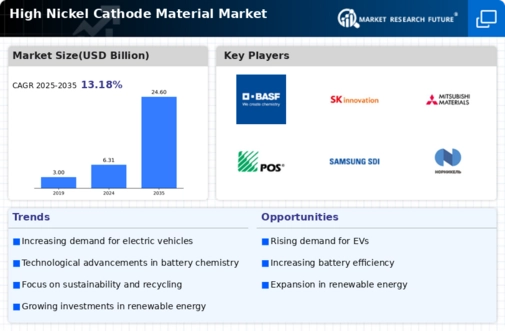
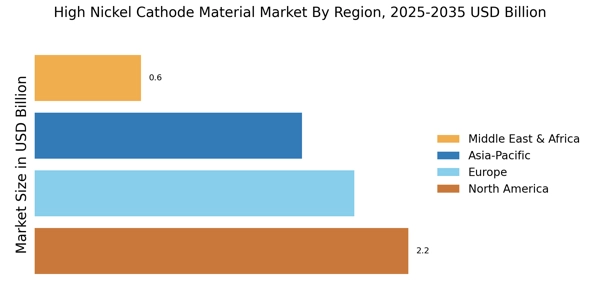


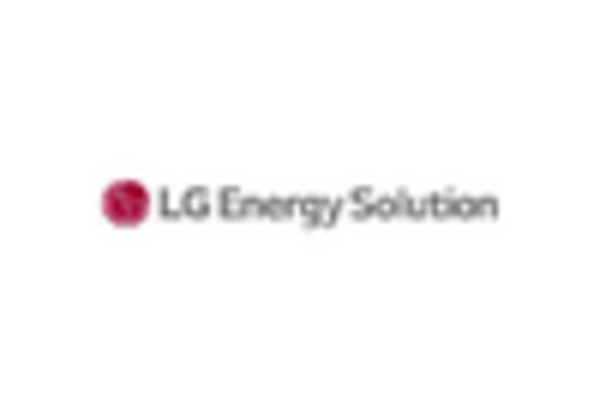
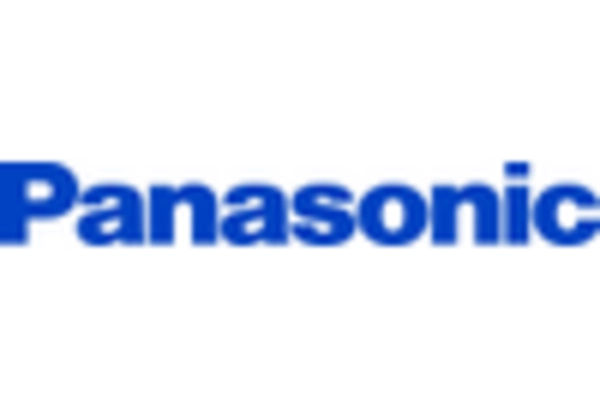

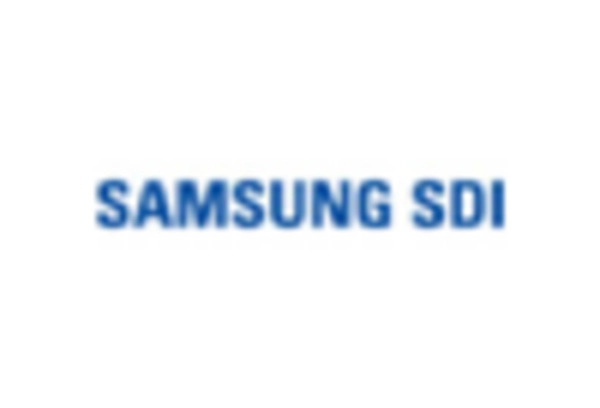








Leave a Comment